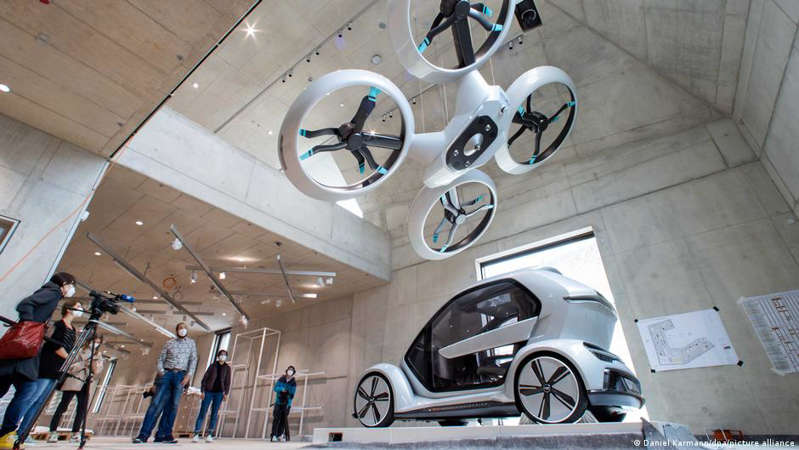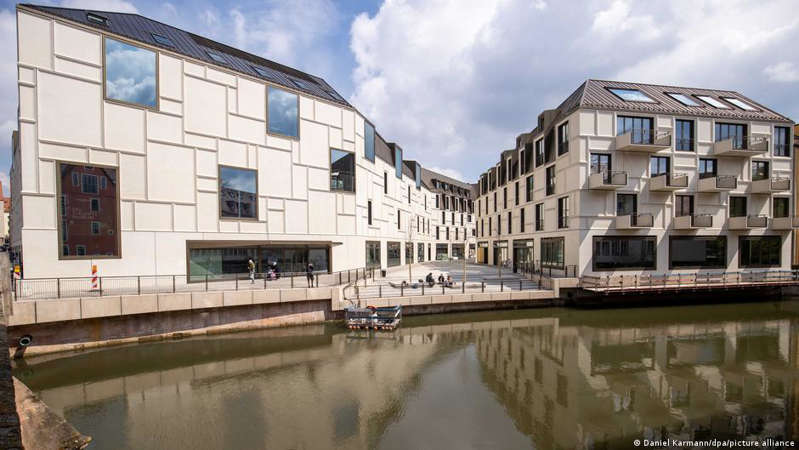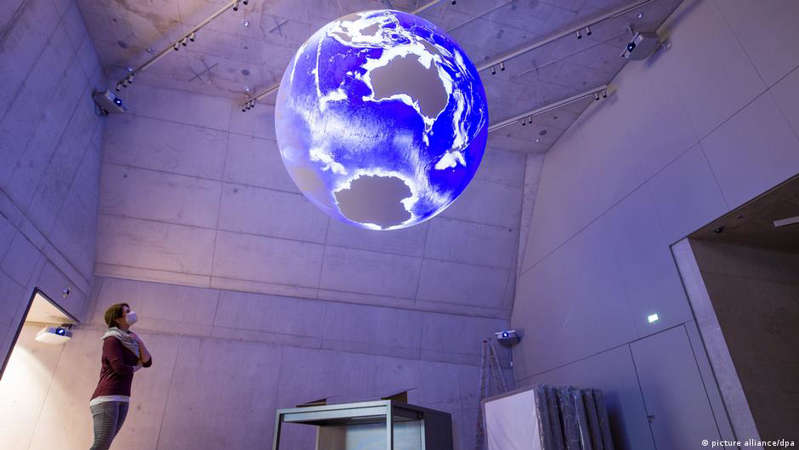How will our life change in the coming years? What are we going to ride? What will our cities look like? Is the creation of a superman real? And is there a limit to technical progress? The answers are at the Museum of the Future in Nuremberg.

Audi Pop.Up Next is a conceptual unmanned flying electric vehicle that can move both on the ground and in the air. It is a joint development of German automaker Audi AG, aircraft manufacturer Airbus, and design company ItalDesign Giugiaro
Control technology solely with the power of thought? Yes, yes, technologies are developing so quickly now that ideas that seemed fantastic until recently are already becoming a reality. The Museum of the Future (Zukunftsmuseum), established in Bavarian Nuremberg, tells how technological progress affects a wide variety of areas of human life. It became a new branch of the famous German Museum (Deutsches Museum) located in Munich – the largest museum of natural history and technology in the world.
Is there a limit to technical progress?
In what conditions will we have to live and work in the next 10, 30, 50 years? What will our cities look like? What vehicles are we going to use? What new opportunities will open up thanks to medicine and genetic engineering? What will happen to our planet if we continue to emit as many greenhouse gases into the atmosphere as we do today? How will the aerospace industry develop further? The creators of the exhibition, housed in a building with a total area of 3000 square meters, tried to look into the future and provide answers to these questions.

Building of the Museum of the Future in Nuremberg
However, the concept of the Museum of the Future implies not only a demonstration of ultra-modern technologies and their capabilities. The main goal is to make people think: is there a limit to technological progress? At what stage is humanity now? And does it need to be accelerated?
To discuss the problems associated with modern trends in the use, implementation and development of modern technologies, the museum has created a communication center called “Forum”, which can accommodate about 100 guests and is adjacent to a hall with a large LED cube. There will also be a library, scientific and practical laboratories and a “workshop of the future” – a seminar, the participants of which will be able to exchange information from the world of high technologies and jointly develop new ideas that contribute to changing our lives for the better without harming the environment.
Work and daily life
The exposition consists of five thematic sections. The first, the Work and Daily Life section, reflects the impact of modern technology on our lives – be it a bomb defusing cyborg, a smart car that cleanses a house, devices that replace pets, or anthropomorphic robotic love dolls.
How likely is it that humans will be replaced by an artificial intelligence machine in the future? And what could such a development of events lead to? How does virtual life affect our mental development? What ethical issues are associated with the use of robots? What spheres of life are we ready to entrust to gadgets in the future, and which are not? This is the theme of this part of the exhibition.
Body and mind
Do we have the right to interfere with the human genome? What makes us human? How can genetic engineering affect our lives in the future? Who, where and how creates artificial human organs for transplantation? Will genetic engineering make it possible to rid the fetus in the womb from hereditary diseases, as well as improve the appearance, physical characteristics and mental abilities of future children? Is it possible to create a superman with the help of “gene scissors”? Information about this is given by the section “Body and Mind”.
System city
What will the city of the future be like? What vehicles are we going to use to travel by water, air and land in the future? What methods will be used to deliver goods? How important is the use of alternative energy sources – especially against the backdrop of depleting oil reserves?
The “System City” section is a look at what transformations are coming in the life of the population of large cities in the context of urbanization and globalization. Visitors to the interactive booth even have the opportunity to experience the scenario of a 1000-day power outage and feel how much humanity's dependence on resources is.
System planet
A huge globe hangs from the ceiling. With the help of eight powerful projectors, it demonstrates the incredible changes on the planet as a result of human impact on nature – including global warming and its devastating consequences.

Provided by Deutsche Welle
What is technology for us in such a situation – good or bad? And what can their rapid development turn into for humanity? The thematic section “System Planet” invites you to think about the answer to such questions.
Space and time
The last section of the exposition, which is called “Space and Time”, takes the visitor into an endless distance – to the vastness of the Universe. Among the exhibits presented here is the Soviet spacecraft “Foton-1”, which was used for technological and scientific research and made a twelve-day unmanned flight into space in 1985. Visitors will learn about the future of space tourism, how the rover is operated and how they are going to clear space debris from Earth's orbit.
About 150 unique exhibits, as well as many interactive stands, are presented at the Museum of the Future in Nuremberg. Its main interactive attraction is a 15-meter pipe passing through all three floors of the building, in which everyone can free-fall in zero gravity. The video recorded with a high-speed camera after the experiment will help to refresh later in memory these bright moments and to experience the experienced emotions again.
See also:
Author: Natalia Koroleva

